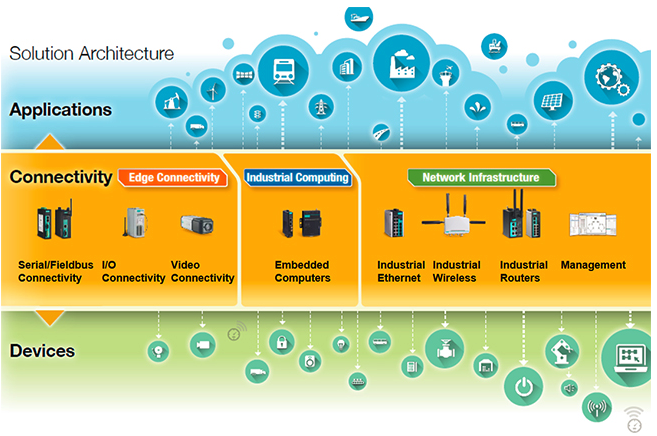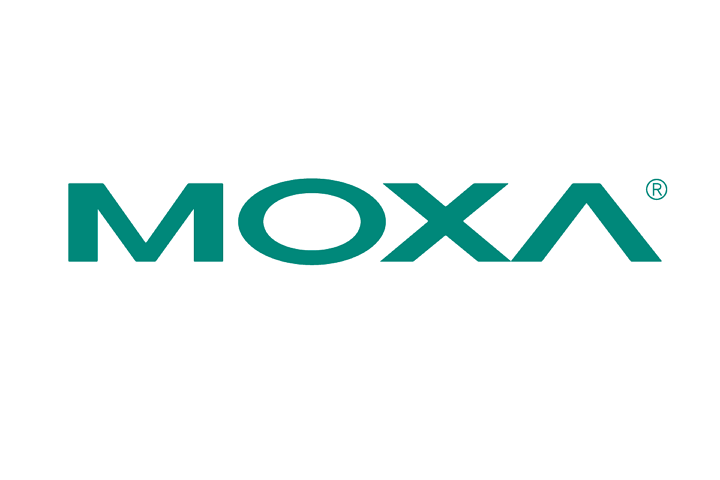The quantity of intelligent devices connected to the World Wide Web significantly surpasses the number of individuals on the planet. Ranging from intelligent urban centers and sophisticated industries, to intelligent edifices and homes, the IoT is constantly advancing; a growing number of devices are being digitally empowered to communicate intelligently via networks to enhance the surveillance, management, and security of everything around us. Consequently, the manner in which we engage with processes and data, along with how machinery communicates with one another, is undergoing transformations. In our pursuit of everything intelligent, nonetheless, the hurdles are increasing for industrial networks to adapt to the requirements of the Industrial IoT.
A lot is on the line. Based on a recent Nexus study, 77% of participants view interoperability as their topmost obstacle in the Industrial IOT. Given this and a myriad of other prerequisites, entities will have to discover resolutions that will enable them to attain the most seamless operation possible.
This piece delves into the different obstacles organizations encounter in the Industrial IoT and explores pathways towards optimizing operations and minimizing expenses.
Primary Challenge #1: Interoperability–Navigating the Compatibility Maze
Backdrop and Challenge: Within any interconnected system, every one of its component devices must possess the ability to communicate with each other—to converse in the same vernacular, even if these gadgets serve disparate domains. A lack of common software interfaces, standard data formats, and shared connectivity protocols is complicating matters in the realm of IoT. For industries, this translates to 40% of the total economic value of the Industrial IoT staying inaccessible because divergent systems are incapable of harmonious collaboration. Furthermore, the pursuit of seamless interoperability is further encumbered by the prolonged lifespan of traditional devices that necessitate costly modifications or replacements to synchronize with the latest technologies.
Solution: Establishing connections in communications between devices and the rest of the Internet will necessitate middleware or gateways that ensure interoperability throughout a network by translating the data from one protocol to another. For instance, middleware in the form of OPC allows data exchange across networks without any proprietary limitations, surmounting interoperability challenges. An OPC server can perpetually relay data among PLCs on the factory floor and SCADA systems, RTUs in the field, HMI stations, and software applications on desktop computers. When it comes to migrating from legacy systems to IP, gateways play a vital role in facilitating IP adoption seamlessly. The positive news is that there is no need to replace existing devices in your network; thereby, saving substantial costs. Furthermore, it is imperative that, with the proliferation of network devices and protocols, the middleware delivers rapid protocol conversion. This is a critical aspect that network engineers must ponder seriously if they aspire to integrate various protocols effectively.
Primary Challenge #2: Dependability–Enduring Challenges in a Pioneering Realm
Backdrop and Challenge: The success of the IoT hinges on steadfast IP-based networks. The bedrock of a productive and efficient network is established on proven devices. Device reliability in the IoT holds exceptional significance in the severe operational environments characteristic of the oil, gas, marine, power, and railway sectors. These sectors will increasingly rely on remote connectivity, making it paramount to deploy devices resilient enough for such conditions. No matter how ingeniously constructed and user-friendly the front-end may be, its value diminishes if the backend of the system proves unreliable. Devices that malfunction or fail due to extreme temperatures and other harsh environmental elements will detrimentally affect the adoption of the IoT. The potential repercussions of device breakdown are all too clear: human lives at risk, expensive downtimes, and flawed data analysis, among others.
Solution: The prosperity of the Industrial IoT predominantly rests on a robust and high-performing backend infrastructure. Investing in rugged industrial-grade devices—featuring extensive operating temperature ranges, heightened MTBFs, level 4 EMS protection, dual-power supplies, and dual-LAN technology—is indisputable for sectors operating in challenging environments.
Moreover, several redundancy technologies exist to guarantee swift network restoration. Nevertheless, open protocols like RSTP do not match the speed of proprietary protocols. The compromise is that proprietary protocols lack interoperability. Recent advancements in redundancy technologies such as Turbo Ring and Turbo Chain have enabled compatibility with RSTP and other networks, offering the best of both worlds.
Primary Challenge #3: Security–Strictly Confidential
Backdrop and Challenge: With an increasing number of industrial users expected to remotely access all their internet-connected devices and cloud-based services, the vulnerability to cyber threats has reached unprecedented levels. Up until lately, cybersecurity concentrated on a limited set of end points. With the onset of the Industrial Internet, security measures must broaden their scope to encompass the physical and virtual realms at a considerable scale.
Solution: Revamping new security frameworks that transcend the entire cyber-physical spectrum, from device-level validation and application security, to comprehensive system-wide assurance, is indispensable. As a general rule, the reliability of an IoT solution is shaped by its weakest link. Therefore, fortifying security with devices engineered with firewall protection compliant with industry cybersecurity standards like IEC-62443 is vital. Given that firewalls vary significantly in their capacity to monitor, document, and report on device activity, ensure the device offers extensive and practical activity logging and alerting functionalities. Regarding secure remote access, firewalls should incorporate VPN support (open VPN encryption). Layer Two Tunneling Protocol (LZTP) and Internet Protocol Security (IPSec) represent trusted functionalities for securing remote device access.
Concerning physical security, operators can eliminate blind spots by utilizing robust industrial-grade IP surveillance cameras compatible with networks equipped with Video Always-On technology to provide continuous monitoring, even in challenging environments or during multicast streaming.
Primary Challenge #4: Network Performance–Navigating the Data Deluge
Backdrop and Challenge: The majority of networks are ill-equipped to tackle the demands of an expanding IoT landscape. The prevailing trend is towards integrating multiple systems and video surveillance; thus necessitating unified networks boasting high bandwidth to amalgamate video, voice, data, and control directives. Existing monitoring tools are already strained to capacity. Networks will face mounting pressure to furnish elevated bandwidth as billions of devices will generate an exponentially larger volume of data points; all of which necessitate collection and analysis. Transmitting this immense data load over the World Wide Web will consume increased bandwidth levels; otherwise, networks will contend with bottlenecks.
Solution: Data transmission rates are a pivotal factor when selecting a network technology for a particular application. Technologies such as 4G (LTE, LTE-A) and 5G are favored for IoT applications due to their swift data transfer rates.
Diverse alternatives are available to construct the high-speed network of the future. A Gigabit-levelbackbone is a single solution that network engineers are leaning towards in order to meet the demand for continuous high performance. It is important to consider the IEEE 802.11n standard – a progress that provides up to 300 Mbps and MIMO for smooth video delivery over wireless networks. Additionally, multicast technology should be incorporated in the central, perimeter, and entry layers of a network to streamline operations, especially in critical multi-service networks. Enhancing network performance can be achieved by enabling video systems to utilize the network more effectively through intelligent video analysis that detects and prioritizes video streams based on motion, object detection, or alert areas.
Primary Challenge #5: Expandability – Surpassing the Wired Limit
Background and Challenge: With billions of already connected devices and billions more to come, the reality is that an extensive addition of devices brings numerous potential event failures. Industrial systems must equip themselves with scalable infrastructures that are ready for expansion. By 2020, IDC predicts that the overall number of “Connected Things” will surpass 200 billion. Furthermore, in the future, a rising number of deployed devices will be mobile, intermittently connected, and energy-efficient – they will need to adapt to their changing environment.
Solution: IoT systems need to be flexible and scalable through software or additional functionality that seamlessly integrates into an overarching solution. New redundancy technologies such as Turbo Chain enable adaptable and extensive scalability to support Industrial IoT applications; they also ensure that large networks are consistently reliable. In mobile networks, LTE has been developed to provide advanced capabilities for numerous mobile devices to carry out real-time interactions or vital data transactions. Additionally, low-energy devices equipped with intelligent CPUs can simplify network expansion as they possess ample processing power and are energy-efficient.
Primary Challenge #6: Administration – All Encompassing
Background and Challenge: The Industrial IoT needs to be constructed with maintenance and updates in consideration. As a complex network of interconnected devices is established, system operators will not only need to manage the original system but also oversee all new systems.
Engineers are faced with a steep learning curve. Most management software interfaces are not tailored for industrial automation; different management activities necessitate distinct tools. The manual setup of a network can lead to human errors and long working hours. Furthermore, additional expenses are incurred in hiring/training engineers in control rooms to promptly address errors.
Solution: Contemporary management solutions simplify network engineers’ tasks by providing them with the following resources:
- An inclusive network management suite covering installation, operation, upkeep, and diagnostics
- A productivity tool for swift configuration and deployment of devices
- Proactive maintenance involving sensors for continuous machinery monitoring to prevent breakdowns and predict maintenance requirements rather than relying on regular maintenance schedules
- Mobile management via apps enabling engineers to monitor real-time device status or receive event notifications
- Application Program Interfaces (APIs) as a potent tool to streamline application development for device or system management

Moxa’s Solutions
Moxa provides multiple solutions that address these aforementioned challenges. For instance, our renowned network redundancy technologies like Turbo Chain, Turbo Ring, AeroLink Protection, and V-ON ensure rapid network recovery. Additionally, the industrial network management platform, MXview, supports IA-friendly features such as real-time, port-level topology and SCADA integration. The MXview ToGo app allows engineers to monitor real-time status or receive event alerts anytime, anywhere. To explore Moxa’s complete array of solutions for the Industrial IoT, visit our website here.
- Not Only for Automobiles: Discovering CANbus Technology in Various Industrial Settings - October 29, 2024
- Boost Your Network Performance: An Exciting Manual to PoE Switches! - September 10, 2024
- Understanding Gigabit Switches: Industrial vs Regular Gigabit - September 4, 2024


